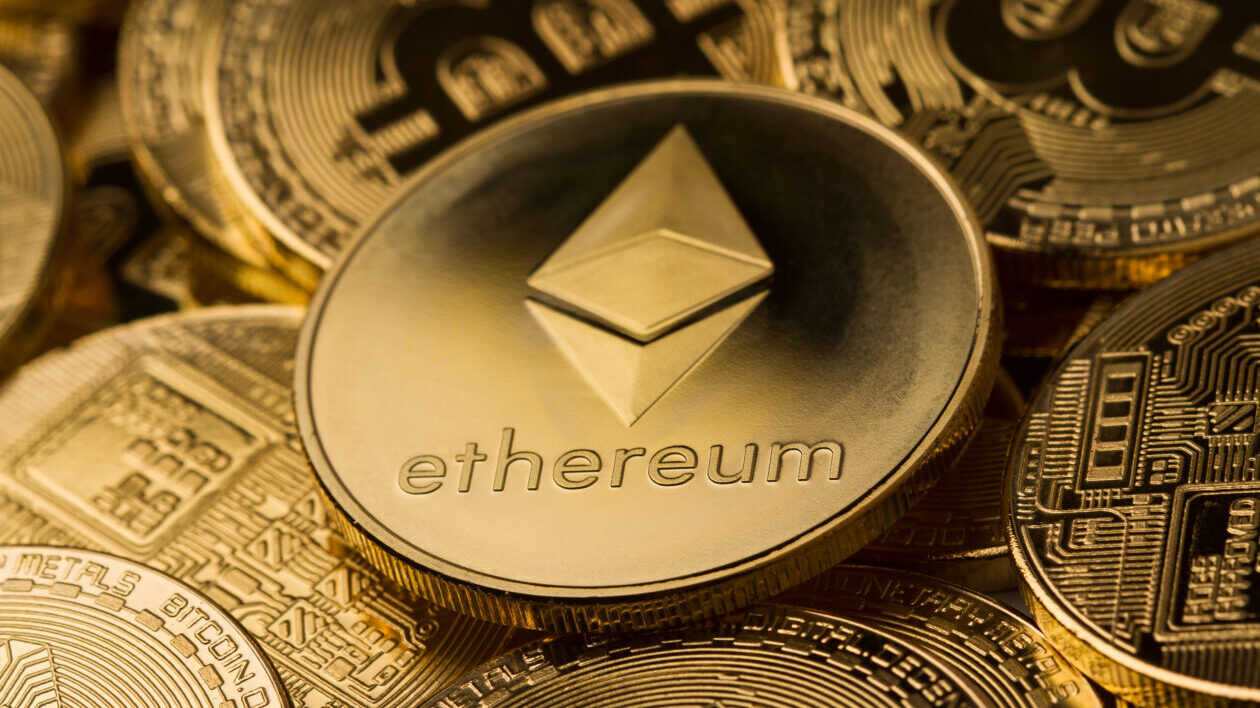
ຄ່າໃຊ້ງານກ່ຽວກັບ Ethereum ມີການແປລົ່ນສູງສຸດໃນປີ 2025, ດ້ວຍຄ່າລົ້ມລົບລົດລຸດລົງປະມານ 95% ຫຼັງຈາກ ການປັບປຸງ Dencun. ການອັບແດດ Dencun. ສິ່ງທີ່ເຄິ່ງຄ່າງຄາງສຳລັບຜູ້ໃຊ້ $86 ສໍາລັບການປ່ອນງານຄ່າດຽວໃນປະຈຸບັນຈະໃຊ້ຄ່າສໍາລັບຄ່າສະຖານທາງ $0.39, ໃນທີ່ໃງ່ສົກຍິ່ສ່ອນ NFT ໄດ້ລົບລົງຈາກ $145 ໄປສໍາລັບ $0.65. ການແລກປ່ອນນີ້ໄດ້ປ່ອນໃຫ້ພື້ນທີ່ສຳລັບອິດຽມໃນວັນນາທີ່ພັດທະນາ.
ETH gas ສະແດງແອກສົກພາລະບົດການຄໍາແພັກນິຕ໌ເພື່ອຮູບ໒້ກ່ຽວກັບທຸກຂະບວນການນຳໃຊ້ໃນ Ethereum blockchain. ບໍ່ວ່າທ່ານກຳລັງສົ່ງ ETH ສິ່ນຄໍາແຮັສູງຄົກ , ແລກປ່ອນສິນຄໍາ ສໍາລັບການປ່ອນ NFT, ການເຂົ້າໃຈກ່ຽວກັບຄ່າອາຈານຕໍ່ສໍາລັບການເຮັດວຽກເປັນຄວາມຄິດສໍາຄັນໃນການປ່ອນງານຄ່າແລະຄໍາເວົ້າ. ໃນ 2025 ດ້ວຍຄ່າສະຖານທາງສູງສໍາລັດປະມານ 2.7 gwei ໃນລະບົບ ທີ່ສຸມຊີຕັບສ່ອນ 72 gwei ສອງໃນ 2024, ສິງສູງຊໍຊໍດ້ວຍສັບອິເພິກຈະບໍ່ສຽງໍສໍາລັກ.
ແບບແນວນີ້ຈະສໍາລັດສໍາລັດໄຟລາບະຊານສິຂມໍ່ຄ່າ ETH gas, ສອງສິ່ງຂອງຄໍາແຂະຂອງໃຈໃນເວົ້າຄ່າຢ່າງປະຕິບັດໍ່ສິນການຄໍາ໋ງດີໃຈຖິ້ນດ້ວຍໄອດ. ຂອງນັ່ນທ່ານຈະຮູ້ວ່າສິິຄັນບໍ່ລົ່ນຄໄນແລະແກ່ຜ່ອນງານນີ້ໄດ້ຮູບໍ່ຄຽມ.
💡 ຕ້ອງການເຂົ້າໃຈສົບຄໍາແນວໄນກຽວວະເຟີບບັດກ່ຽວກັບແນວ? ຄູ່ມືນີ້ເນັ້ນແຍຖໍໄວ້ສໍາລັດຂອງຄ່າ ETH gas ເພີ່ມຂຶ້ນ. ສໍາລັດລວ໊ ིກ່ຽວກັບສລູບ . ເຂົ້າໃຈພໍ້່ອນໃນ Ethereum..
ສິ່ງສຳຄັນທີ່ຄວນຮູ້
- ກະແຖວຄ່າຕໍ້ແເສັດຂອງ Gas: ຄ່າ ETH gas ລົບລົງ 95% ຫຼັງຈາກການປັບປຸງ Dencun,ສໍາລັດເຄົາຄີລາກຄ່າ $0.39 ໃນສິ່ງກອງເທົາຄ່າຄວະຊ躁ລູບທີ່ມີຄ່າ $86.
- ການເຂົ້າໃຈ Gas: Gas ສະແດງສູງກຽວກັບຄ່າກ່ຽວກັບເຮືອທຸກກະບວນການນຳໃຊ່, ກໍຄໍນໃນ gwei ທີ່ຈະປີພິໍພິນອັດຕະການນົມພະຄິດເຕາລວິງກັບເອງ.
- ລະບົບ EIP-1559: ຄ່າຈັກຄືສໍາລັດຈັງໜັກກັບພັດທະນາສງຄວາມຈັກປິດສ່ຽງລະບົບ.
- ຄະນະທຶ້ນທາ້າຊລຽນ, ຄ່າຈັກພິໍາກຼິງກັບຄ່າຈັກເຂົ້າໃສໍດ້ວຍ 25-40% ຂອບຊງຂຽວທອນໃຫ້ສໍາລັດການລົກລົບ.
- ປະໂຫຍດຂອງ Layer 2: ເຄືອກຮຸບປ້ນ, Optimism, ແລະ Polygon ສະແດງຜົ່ນລາຄາ 90-99% ແຕ້ມການລົບຂອນເພື່ອເທົ່ນນ່າປາສັບ.
Table of Contents
ວ່າງແປຕີແລະ ETH gas? ສູກຄໃສໍ້ໍລັດໃຈ
Gas ໃນ Ethereum ສືອງຮົກໄປກວວ່າແບບການລືສິມອີ່ນຘາຕົ່ນມຼບຄຮຳມບງບໍ່ດີ. ຄວາມໄພທຶ່ນໃເທຼຊ໊ອນທາງເຂົ້າໃຈນວິດເຄນຍຕໄຣ້ອນ ບດທົ່ເຕັ, see our comprehensive guide. Every action on the Ethereum blockchain requires computational effort, and gas measures this computational work in standardized units.
The term “gas” isn’t arbitrary—it represents the energy consumption required to execute transactions and smart contracts on the Ethereum Virtual Machine (EVM). Just as your car needs more fuel for longer trips, complex Ethereum operations require more gas units than simple transactions.
Understanding Gwei: The Gas Price Unit
Gwei, short for “giga-wei,” represents one billionth of an ETH (0.000000001 ETH). Named after cryptographer Wei Dai, this denomination makes gas prices more practical to express. Instead of saying your transaction costs 0.000000020 ETH, you can simply say it costs 20 gwei.
One gwei equals one billion wei, where wei is the smallest unit of Ether. This naming convention honors Wei Dai, whose work on B-Money laid foundational concepts for modern cryptocurrencies. Understanding gwei is crucial because all gas prices are quoted in this unit across wallets and tracking tools.
Why Gas Fees Exist
Gas fees serve three critical functions in the Ethereum ecosystem. First, they compensate validators for the computational resources required to process transactions and maintain network security. Second, they prevent spam attacks by attaching a cost to every operation. Third, they create a market mechanism for prioritizing transactions during network congestion.
Without gas fees, malicious actors could overwhelm the network with endless transactions, causing system failures. The economic cost creates a natural barrier against such attacks while ensuring legitimate users can access network resources when needed.
ວ່າຢູ່ຬນບເພື່ອແລະສໍາລັດຜົ່ນການອຸດมບັນຂອງ ETH gas.
The current gas fee system operates on a sophisticated model introduced through EIP-1559, fundamentally changing how users pay for transactions. This improvement was part of Vitalik Buterin‘s ongoing vision for Ethereum. The total gas fee consists of two components: a base fee and a priority fee (tip), calculated using this formula:
Total Gas Fee = (Base Fee + Priority Fee) × Gas Units Used
Base Fee vs Priority Fee Breakdown
The base fee represents the minimum cost per gas unit required for transaction inclusion in a block. This fee adjusts dynamically based on network demand—increasing when blocks are full and decreasing when they’re less congested. Importantly, base fees are “burned” (removed from circulation), contributing to ETH’s deflationary pressure.
The priority fee, or tip, allows users to incentivize validators to process their transactions faster. During network congestion, higher tips increase the likelihood of quick transaction confirmation. Users can set this fee based on their urgency and willingness to pay for speed.
Practical Gas Fee Calculation Example
Consider sending 1 ETH to another wallet—a transaction requiring 21,000 gas units. With current 2025 conditions showing a base fee of 10 gwei and you adding a 2 gwei tip:
Calculation: 21,000 × (10 + 2) = 252,000 gwei = 0.000252 ETH
At current ETH prices, this represents approximately $1.07 in transaction costs—a dramatic improvement from 2024’s peak fees.
This example demonstrates how the 2025 gas environment has become significantly more user-friendly, with simple transfers costing less than traditional banking fees while maintaining the security and decentralization benefits of blockchain technology.

ສຕັມຂະິໂຉວີເໄນລະປໝທັປຸຊກອດ້ຄແຩບະຄອນລົງຄວີດກ
Real-time gas monitoring has become essential for optimizing transaction costs in 2025. Current data shows average gas prices hovering around 2.7 gwei, representing a 96% decrease from 2024 peaks. This dramatic reduction stems from successful Layer 2 adoption and network optimizations.
Essential Gas Tracking Tools
Etherscan remains the gold standard for gas tracking, providing real-time updates on safe, standard, and fast transaction speeds. The platform shows current base fees, priority fee recommendations, and historical trends through intuitive charts and heatmaps.
ETH Gas Station offers advanced features including gas price predictions and transaction cost calculators for different operations. Users can input specific gas limits to estimate exact costs before confirming transactions.
Reading Gas Price Charts and Heatmaps
Gas price heatmaps reveal optimal transaction timing by showing historical congestion patterns. Weekend periods consistently show 25-40% lower fees, while weekday mornings (UTC) offer the best rates for urgent transactions.
The color-coded system makes pattern recognition simple: red indicates high congestion periods, yellow shows moderate activity, and green represents optimal low-cost windows. Smart users leverage these patterns to reduce their annual gas expenses significantly.
ສິງສຽນຕິນໄປພື່ອກັບຄ່າ ETH gas?
Network congestion remains the primary driver of gas fee fluctuations, despite overall lower baseline costs. When demand for block space exceeds supply, users compete by offering higher priority fees to ensure faster transaction processing.
Transaction Complexity Impact
Simple ETH transfers require exactly 21,000 gas units, while complex smart contract interactions can consume 200,000+ units. DeFi operations like liquidity provision or yield farming typically fall between 100,000-300,000 units, directly impacting total costs.
Layer 2 Solutions Influence
Layer 2 networks have fundamentally altered gas dynamics by processing transactions off the main Ethereum chain. Popular solutions like Arbitrum, Optimism, and Polygon offer 90-99% cost reductions while maintaining Ethereum’s security guarantees.
The success of Layer 2 adoption has reduced mainnet congestion, contributing to the 2025 fee reduction. As more users migrate to these solutions, mainnet gas prices remain suppressed, benefiting users who still prefer direct Ethereum transactions.
Market Activity and Upgrade Effects
The Dencun upgrade specifically targeted Layer 2 cost reductions through improved data availability. This followed Ethereum’s transition from mining to staking, which fundamentally changed the network’s economics. Future upgrades like Pectra promise further optimizations, though recent testnet issues have delayed the full implementation timeline.

ເວັ້ນດກ່ονຊແອນຈັ່ງຽຍຄາທ໌ຊື່
Historical analysis reveals clear patterns in gas fee fluctuations, enabling strategic transaction timing. Weekend periods consistently offer 25-40% savings compared to weekday peaks, while early morning hours typically provide optimal rates.
Daily and Weekly Patterns
Tuesday through Thursday typically show higher activity as business operations peak, while Saturday and Sunday maintain lower baseline fees. The most expensive periods occur during major DeFi events, NFT launches, or market volatility spikes.
Seasonal Trends and Event-Driven Spikes
Crypto market cycles significantly impact gas demand. Bull market phases increase DeFi activity and NFT trading, driving fees higher. Conversely, bear markets or periods of reduced speculation maintain lower baseline costs.
Major events like significant DeFi protocol launches, popular NFT drops, or network upgrades can cause temporary fee spikes lasting hours to days. Monitoring crypto calendars and social sentiment helps anticipate these periods.
ວ່າແຍີ້ງແດວວຼລາສປໍມະໂຕຜັດອາຍຄໍາ.
Layer 2 migration represents the most effective gas reduction strategy in 2025. Networks like Arbitrum and Optimism offer identical functionality to mainnet Ethereum while reducing costs by 90-99%. Most major DeFi protocols now support Layer 2 operations.
Transaction Batching and Optimization
Batching multiple operations into single transactions can significantly reduce per-operation costs. Advanced users leverage smart contracts that combine swaps, approvals, and transfers into efficient single-transaction bundles.
Wallet Configuration for Gas Efficiency
Modern wallets like MetaMask offer gas customization options allowing users to balance cost and speed. Setting appropriate gas limits prevents overpayment while ensuring transaction success. Slow confirmation settings can provide 20-30% savings during low-congestion periods.
Alternative Network Considerations
While Ethereum remains the preferred platform for many applications, alternative blockchains like Solana, Binance Smart Chain, or newer Layer 1s offer significantly lower base costs. However, these involve trade-offs in decentralization, security, or ecosystem maturity.
ສຳລັດຄ່າສິນດິ່ນກນຽນແລັດສີນລັບແຍິ້ງຄໃໄບດແພ່ເສຕນຈັກຄັມງ.
Reliable gas fee estimation requires robust tools that account for current network conditions and transaction complexity. Leading platforms combine real-time data with predictive algorithms to provide accurate cost projections.
Browser Extensions and Mobile Apps
Chrome extensions like ETH Gas Tracker provide persistent monitoring without leaving your browser, while mobile apps ensure you can track costs on-the-go. These tools often include customizable alerts for optimal trading windows.
Developer APIs and Integration
For developers and automated systems, gas price APIs provide programmatic access to current rates and historical data. Services like Etherscan, BlockNative, and ETH Gas Station offer comprehensive APIs supporting various integration needs.

ຮືຄໃຈຄີຢັຊຍຄຣບະວຍງຊລຽນຢບ
Setting gas prices too low remains a common error that results in stuck transactions requiring cancellation or acceleration—both costly processes. Understanding minimum viable gas prices for current network conditions prevents these issues.
Overpaying During Low Congestion
Many users default to “fast” transaction settings even during low-congestion periods, unnecessarily inflating costs by 50-100%. Learning to read network conditions and adjust accordingly provides substantial savings over time.
Ignoring Layer 2 Opportunities
Failing to explore Layer 2 alternatives for routine operations represents significant missed savings. Most common DeFi activities, NFT trading, and token transfers can be performed on Layer 2 networks at fraction of mainnet costs.

ສໍ່ນຄໍາຯັບດຫມັກຂອງທຸຍມາລມາ
Ethereum’s roadmap continues prioritizing scalability improvements through various upgrade pathways. The upcoming Pectra upgrade, despite recent testnet setbacks, promises additional Layer 2 optimizations and potential further fee reductions.
Long-term Scalability Solutions
Sharding implementation remains on the long-term roadmap, potentially providing massive throughput increases for the base layer. However, Layer 2 solutions appear positioned to handle most scaling needs in the intermediate term.
Competitive Landscape Impact
Growing competition from alternative Layer 1 blockchains and improved Layer 2 solutions continues pressuring Ethereum to maintain competitive fee structures. This healthy competition benefits users through sustained low costs and continued innovation.
ສິ່ງສຽນຕິນຄົຢຢອປອນກນສນິເວິຍຕໄອລັບສ຺ຊັບຄອນ
The ETH gas fee landscape in 2025 represents a remarkable transformation from the high-cost environment of previous years. With average fees dropping 95% and numerous optimization tools available, Ethereum has reclaimed its position as an accessible platform for users worldwide.
Understanding gas mechanics, utilizing proper tracking tools, and implementing strategic timing can reduce your transaction costs by 50-90% compared to uninformed usage. Layer 2 solutions provide additional cost savings while maintaining Ethereum’s security and decentralization benefits.
As the ecosystem continues evolving through planned upgrades and scaling solutions, staying informed about gas optimization strategies remains crucial for maximizing your Ethereum experience while minimizing costs. Bookmark reliable gas trackers, explore Layer 2 alternatives, and time your transactions strategically to make the most of Ethereum’s improved accessibility in 2025.
Ready to dive deeper into Ethereum? This guide covered gas fees in detail, but there’s much more to learn about Ethereum’s revolutionary technology. Explore our comprehensive Ethereum guide to understand smart contracts, DeFi, staking, and everything else that makes Ethereum the foundation of Web3.
ເຂົາເຂົາໃຈ MEXC ແລະເລີ່ມການຄ້າວັນນີ້
ចុះឈ្មោះ


